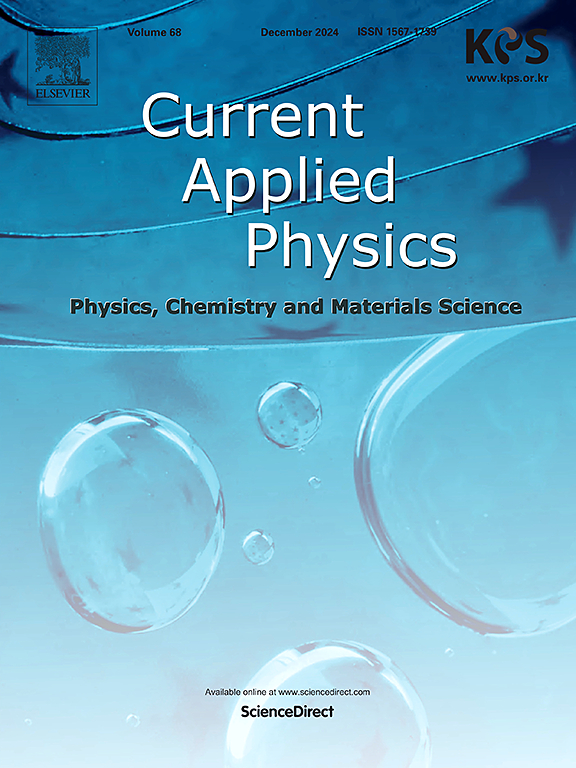Investigation of Sr doping on structural, morphological, optical, photocatalytic and antifungal properties of NiO thin films prepared by spray coating technique
IF 2.4
4区 物理与天体物理
Q3 MATERIALS SCIENCE, MULTIDISCIPLINARY
引用次数: 0
Abstract
Metal oxide nanoparticles have been recognized as efficient, environmentally friendly alternatives to currently available materials for various industries, including food, dye, pharmaceutical, chemical, and environmental treatment. Given the extensive use of metal oxide thin films across these fields, the current work reports the successful synthesis of nanocrystalline Sr-doped NiO films using an eco-friendly spray pyrolysis technique for the photocatalytic degradation of Bromophenol Blue pollutant in wastewater treatment. These films were characterized by XRD, Raman, FTIR, FESEM, UV–Vis, and PL techniques. XRD analysis reveals that the crystallite size decreases from 14 nm to 9 nm as the dopant concentration increases. FTIR and Raman analyses identified surface oxygen interstitials and Ni defect-related vibrations. FESEM showed a continuous surface film with spherical polycrystalline morphology. An increase in optical transmittance and bandgap with the incorporation of Sr dopant was observed in the UV–Vis data. A decrease in PL intensity with increasing dopant concentration suggests a suppression of the recombination rate, as indicated by the PL analysis. The photocatalytic activity of the Sr-doped films was evaluated with Bromophenol Blue (BB) under UV–visible irradiation. The 6 % Sr-doped films successfully decomposed 81 % of the BB, demonstrating their effectiveness as catalysts. Additionally, these films exhibited a lower recombination rate, smaller particle size, and higher surface roughness. The 6 % Sr-doped sample showed the highest zones of inhibition, measuring 25 mm and 23 mm for Aspergillus Niger and Penicillium fungi, respectively. Overall, the Sr-doped NiO films were found to be effective in both the degradation of BB and antifungal activity.

求助全文
约1分钟内获得全文
求助全文
来源期刊

Current Applied Physics
物理-材料科学:综合
CiteScore
4.80
自引率
0.00%
发文量
213
审稿时长
33 days
期刊介绍:
Current Applied Physics (Curr. Appl. Phys.) is a monthly published international journal covering all the fields of applied science investigating the physics of the advanced materials for future applications.
Other areas covered: Experimental and theoretical aspects of advanced materials and devices dealing with synthesis or structural chemistry, physical and electronic properties, photonics, engineering applications, and uniquely pertinent measurement or analytical techniques.
Current Applied Physics, published since 2001, covers physics, chemistry and materials science, including bio-materials, with their engineering aspects. It is a truly interdisciplinary journal opening a forum for scientists of all related fields, a unique point of the journal discriminating it from other worldwide and/or Pacific Rim applied physics journals.
Regular research papers, letters and review articles with contents meeting the scope of the journal will be considered for publication after peer review.
The Journal is owned by the Korean Physical Society.
 求助内容:
求助内容: 应助结果提醒方式:
应助结果提醒方式:


